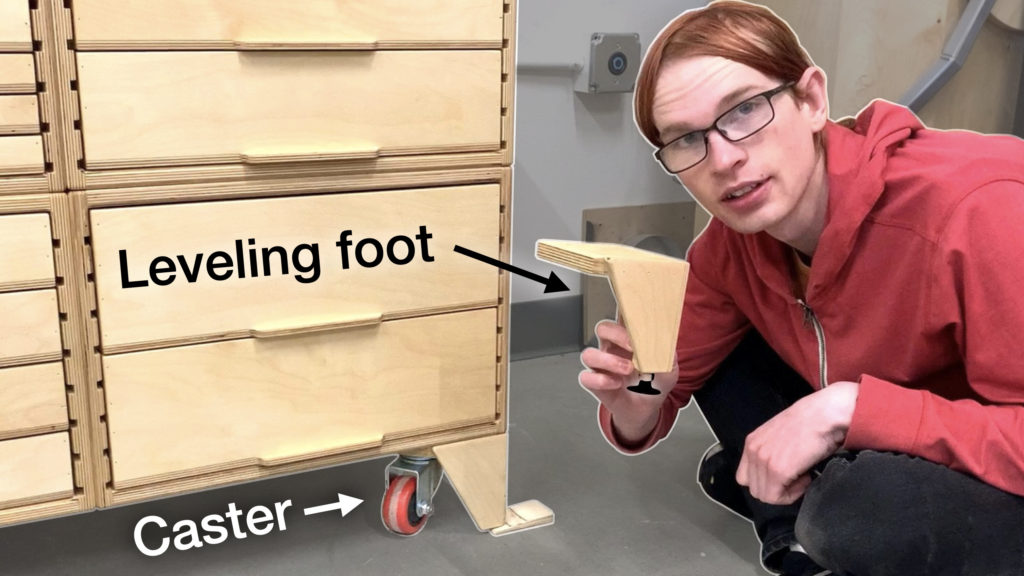
As a part of my Modular Shop Cabinet System, I designed two types of modular Feet — one mobile option with casters, and one stationary option with leveling feet.
Design highlights
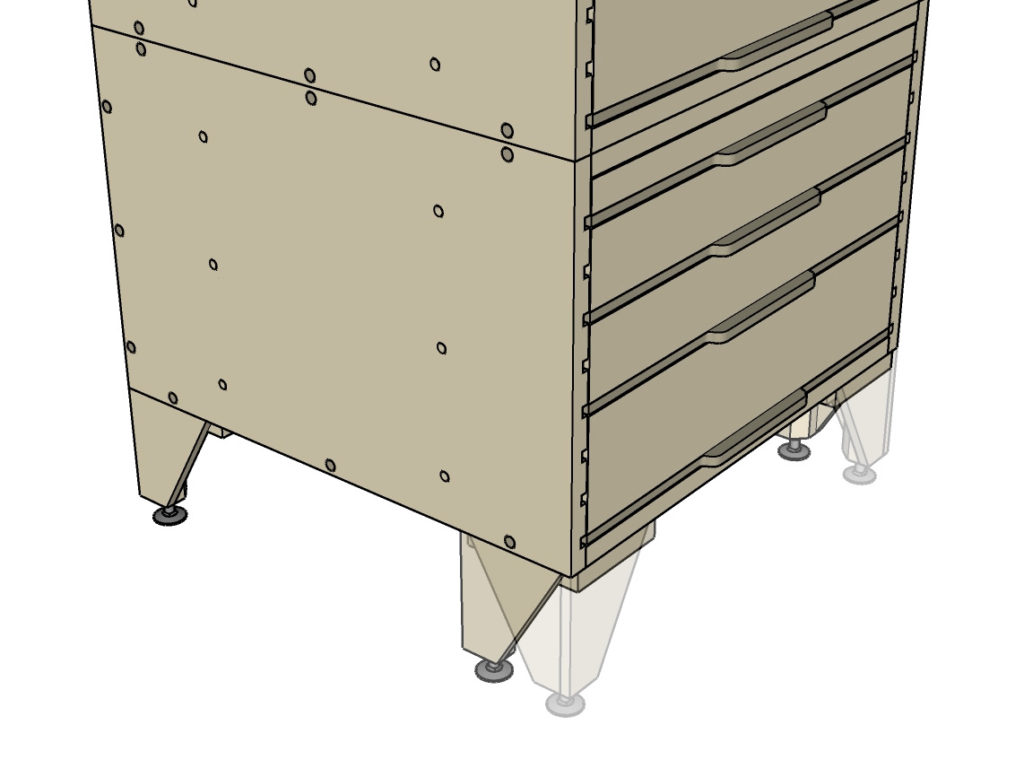
Choose whether to prioritize toe-kick or stability
The Leveling Feet are mounted to the Cabinets using a square hole pattern that allows them to be indexed to four different positions. This way you can optimize the position of the Foot to provide more toe-kick, or more stability, whichever is more important in your situation.
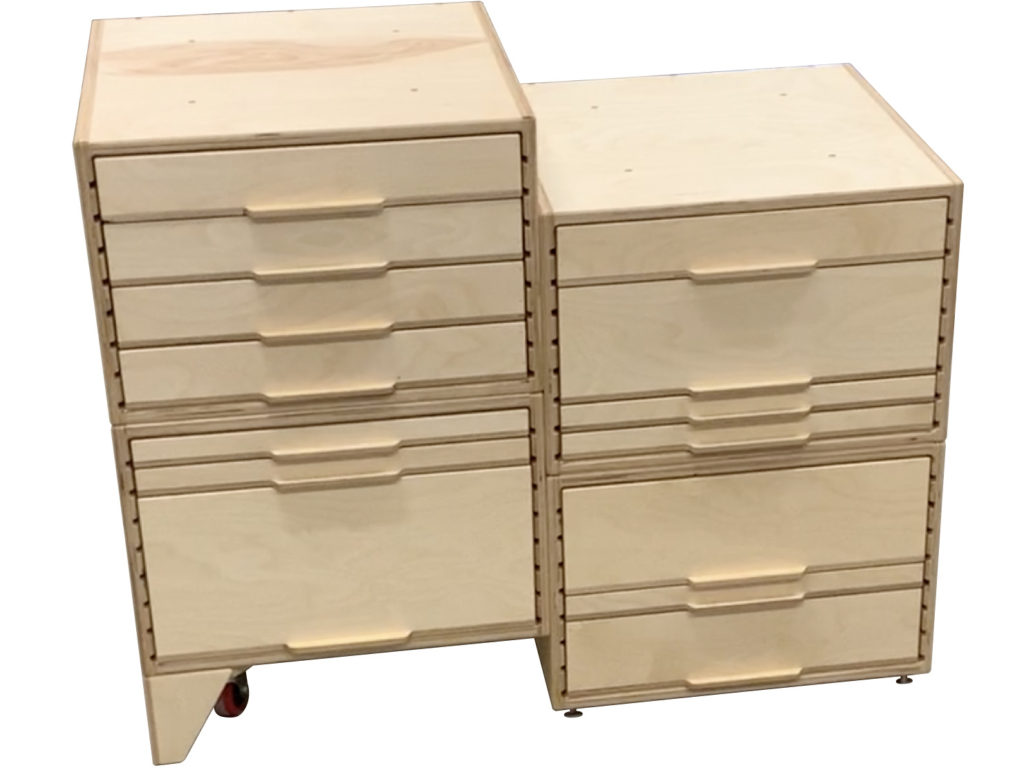
Foot height = Cabinet hole spacing
The Feet raise the Cabinet up by 114mm, which corresponds to the vertical hole spacing in the Cabinets. This way, you can bolt a Cabinet without Feet onto a Cabinet with Feet, since the holes will still line up.
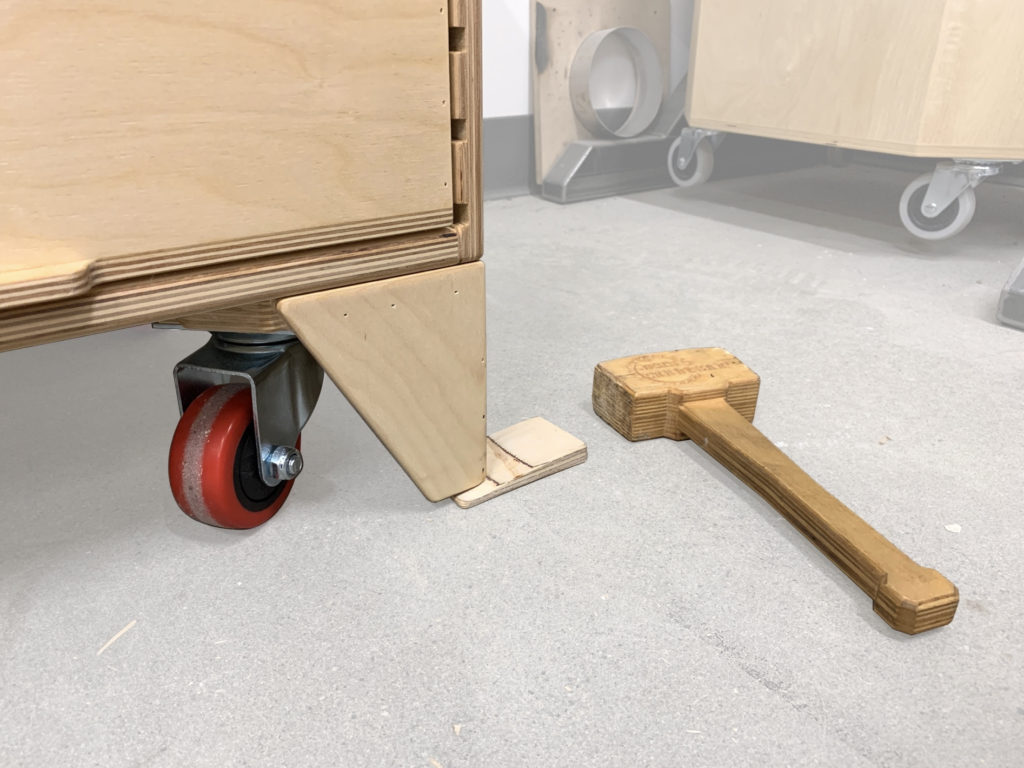
Wedges immobilize the Caster Feet
The Caster Feet have no moving parts to immobilize them, but they have a leg that reaches almost to the floor. Simply tapping a wedge under this leg will keep your Cabinet from moving, while also taking up any unevenness in the floor, preventing rocking.
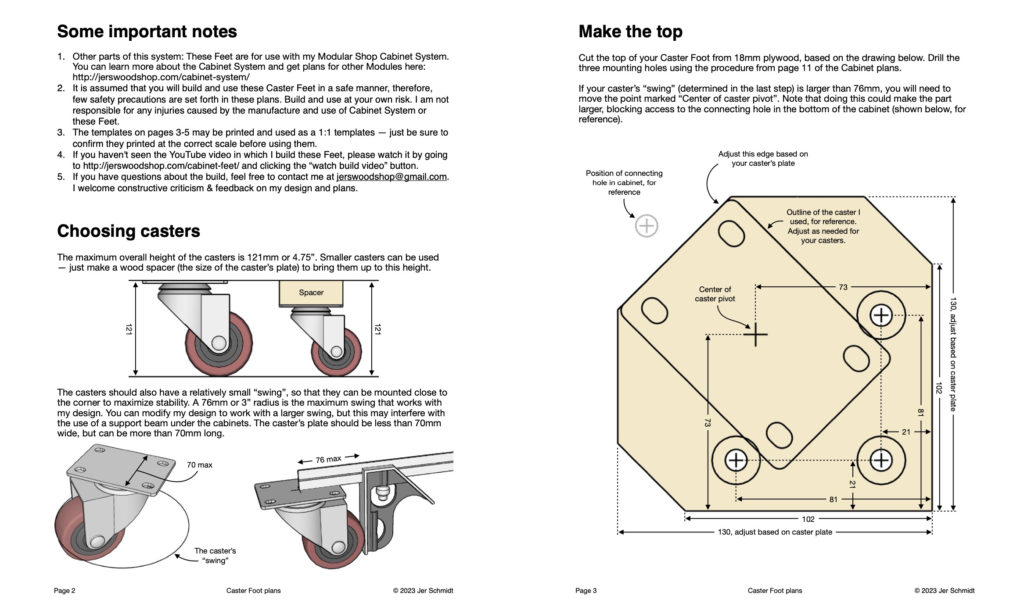
PDF plans with templates
I offer PDF plans with all of the necessary dimensions and templates to make these Feet yourself. Click the buttons below to view the PDFs.
